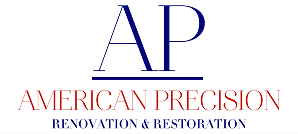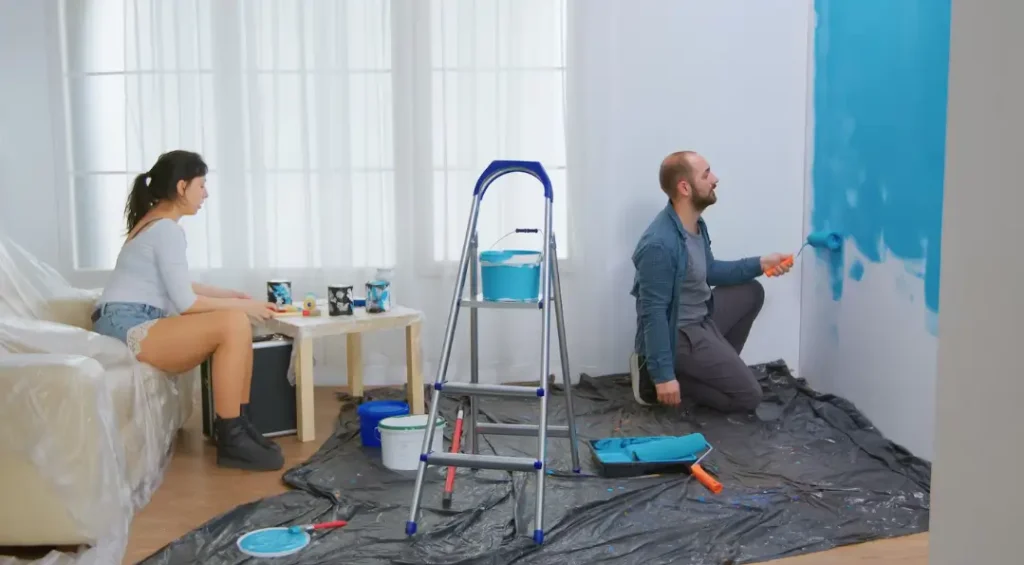Interior painting projects possess remarkable power to completely transform tired, outdated living spaces into fresh, modern environments that reflect current design trends and personal style preferences. A single weekend painting project can deliver dramatic results that rival expensive renovations while staying within modest budgets and providing immediate gratification.
Color Psychology & Space Perception
Strategic color selection in interior painting projects influences mood, energy levels, and spatial perception in profound ways that many homeowners underestimate. Cool colors like blues and greens create calming, peaceful atmospheres that work well in bedrooms and bathrooms, while warm colors like reds and oranges stimulate conversation and appetite in dining and living areas.
Light reflection properties of interior painting colors dramatically affect how spaces feel and function throughout different times of day. Light colors reflect natural and artificial light sources, making rooms feel larger and brighter, while dark colors absorb light and create intimate, cozy atmospheres that work well for entertainment spaces and private retreats.
Accent wall techniques in interior painting projects create focal points and visual interest without overwhelming rooms with bold colors. Single feature walls allow homeowners to experiment with dramatic hues while maintaining overall design balance through neutral surrounding walls that provide visual rest and versatility for furnishing arrangements.
Surface Preparation & Quality Results
Proper surface preparation represents the foundation of successful interior painting projects that deliver professional-looking results and long-lasting durability. Cleaning walls, filling holes, sanding rough areas, and priming properly create smooth, uniform surfaces that allow paint to adhere correctly and maintain appearance over time.
Primer selection and application significantly impact final interior painting results, particularly when changing colors dramatically or painting over stained surfaces. High-quality primers block stains, provide uniform color base coats, and improve paint adhesion that prevents peeling, cracking, and premature wear in high-use areas.
Repair work integration during interior painting projects addresses structural issues that affect final appearance and performance. Filling nail holes, repairing drywall damage, and caulking gaps create seamless surfaces that showcase paint finishes while preventing moisture intrusion and further deterioration.
Professional Techniques & Tool Selection
Brush and roller selection for interior painting projects affects application ease, finish quality, and project timeline significantly. High-quality brushes provide smooth application and clean cut lines, while appropriate roller nap lengths ensure proper paint distribution and texture consistency across different surface types and paint formulations.
Cutting-in techniques around trim, ceilings, and fixtures require steady hands and proper tools that create clean, professional lines in interior painting projects. Quality angled brushes and steady hands produce crisp edges that separate amateur work from professional results, particularly in rooms with multiple colors or detailed trim work.
Paint application methods including brush, roller, and spray techniques each offer advantages for different interior painting situations. Understanding when to use each method ensures optimal coverage, finish quality, and efficiency while minimizing cleanup time and material waste throughout the project.
Color Scheme Development & Coordination
Monochromatic color schemes in interior painting projects create sophisticated, cohesive appearances through varying shades and tints of single colors. These approaches work particularly well in modern and contemporary design styles where clean lines and minimal color variation create calm, uncluttered environments that showcase architectural features and furnishings.
Complementary color combinations in interior painting projects create dynamic, energetic spaces through colors positioned opposite each other on the color wheel. These bold approaches require careful balance and restraint to avoid overwhelming spaces while maintaining livability and long-term appeal for changing preferences and furnishing updates.
Neutral base palettes in interior painting projects provide versatile foundations that accommodate changing decor and seasonal updates without requiring complete repainting. Warm whites, soft grays, and beige tones create timeless backgrounds that allow artwork, furniture, and accessories to serve as primary color sources.
Lighting Considerations & Color Selection
Natural light exposure affects interior painting color appearance dramatically throughout different times of day and seasonal changes. North-facing rooms receive cooler light that makes colors appear more muted, while south-facing spaces receive warmer light that intensifies color saturation and warmth.
Artificial lighting types including incandescent, LED, and fluorescent bulbs alter interior painting color perception significantly. Warm LED bulbs enhance reds and yellows while making blues appear more muted, while cool LED lighting intensifies blues and greens while dulling warm tones.
Light reflection management through interior painting color selection can dramatically improve room functionality and ambiance. Strategic use of light colors in areas with limited natural light maximizes available illumination, while darker colors in bright rooms create more intimate, comfortable environments for relaxation and entertainment.
Finish Selection & Durability Considerations
Paint finish choices for interior painting projects balance aesthetic preferences with practical maintenance requirements and durability needs. Flat finishes hide surface imperfections but require more frequent cleaning, while semi-gloss and gloss finishes provide easy maintenance but highlight wall flaws.
High-traffic area considerations in interior painting projects require durable finishes that withstand frequent cleaning and contact without showing wear. Hallways, children’s rooms, and kitchens benefit from washable finishes that maintain appearance while providing easy maintenance for busy households.
Moisture resistance requirements for interior painting in bathrooms, kitchens, and basements demand specialized paint formulations that prevent mold growth and finish deterioration. Premium paints with mildew-resistant additives and proper ventilation ensure long-lasting results in challenging environments.
Trending Color Palettes & Design Integration
Contemporary interior painting trends favor warm neutrals, soft pastels, and nature-inspired colors that create calming, restorative environments. These palettes work well with modern furnishings while providing timeless appeal that ages gracefully and accommodates changing design preferences over time.
Bold accent colors in interior painting projects allow homeowners to incorporate current trends without committing to complete room makeovers. Strategic use of trending colors on single walls or architectural features provides style updates that can be easily changed as preferences evolve.
Texture techniques in interior painting projects add visual interest and depth without requiring wallpaper or additional materials. Sponging, ragging, and faux finishing create sophisticated appearances that hide minor wall imperfections while providing custom looks that reflect personal style preferences.
Project Planning & Execution Timeline
Room preparation for interior painting projects includes furniture protection, fixture removal, and workspace organization that ensures efficient workflow and protects belongings from paint damage. Proper preparation prevents costly cleanup issues while creating safe, organized work environments.
Multi-room coordination in interior painting projects requires careful planning of color flow, completion sequences, and living arrangement accommodations. Strategic scheduling minimizes household disruption while ensuring color relationships work throughout connected spaces.
Quality control throughout interior painting projects includes regular progress assessment, touch-up identification, and final inspection procedures that ensure professional results. Attention to detail during application and cleanup phases prevents problems and delivers satisfaction with completed projects.
Interior painting represents one of the most cost-effective methods for dramatically transforming living spaces while providing immediate results and long-term enjoyment. Proper planning, quality materials, and careful execution create beautiful environments that reflect personal style while adding value and functionality to homes.

